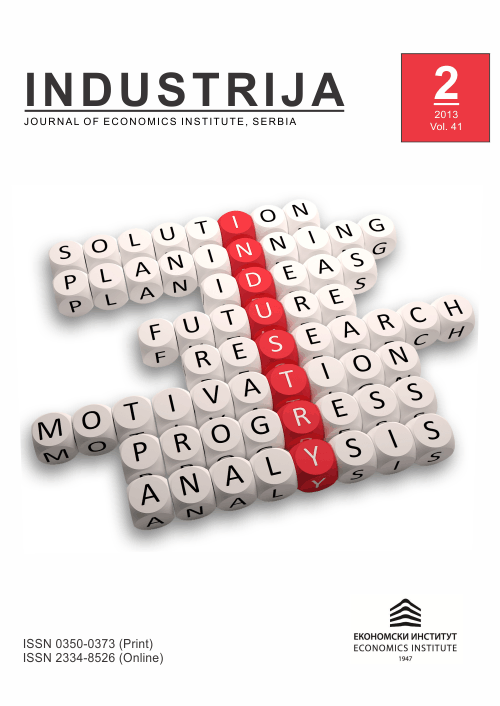Structural Changes in Serbian Industry during Transition
Abstract
Transition is a complex process whereby a country in transition is stimulating structural changes wishing to achieve economic growth and improved social wellbeing. In this paper the authors aim to show that during transition in Serbia there such changes in the structure of manufacturing industry occurred, which resulted with only modest growth that in fact was slower than in other transitional countries. By the means of theoretical and empirical approach – deductive methods, statistical and mathematical evaluation the authors have come to conclusion that structural changes did not improve industry branches like the hi-tech industry that contribute the most to PPP generation. At the same time, some low productive industries have gained on importance, therefore keeping the standard on the low levels without possibility to rapidly converge towards EU average, which was set as an ultimate goal of transition in Serbia.
References
Berg, A. (1994). Does Macroeconomic Reforms Cause Structural Adjustment?, Lessons from Poland. Journal of Comparative Economics, 18, 376-409.
Bošnjak, M. (2011). Rezultati i izazovi ekonomskih reformi u Srbiji u tranzicionom periodu 2001-2008. godine. (p. 56). Belgrade: Ministry of Finance.
Chenery, H.B., & Syrquin, M. (1975). Patterns of Development, 1957–1970. London: Oxford University Press.
-EBRD. (2012). Transition Report 2012 - Integration across borders.
-Eurostat. (2013). Substantial cross-European differences in GDP per capita, Statistics in focus - 47/2012.
Filipović, S., Miljković, M., & Martinović, Đ. (2013). (Un)Competitiveness Of Serbian Industry - The Needs for Reindustrialization. Business Economics, 1, 35-59.
-Government of Republic of Serbia. (2011). Strategy and policy of industrial development of Serbia 2011-2020.
Hansson, A.H. (1995). Macroeconomic Stabilization in the Baltic States ", Stock-holm Institute of East European Economies. Stockholm: Stockholm Institute of East European Economies. working paper.
Jackson, M. (1997). Restructuring or Structural Change in Industry of Transition Countries: A Review of Issues. LICOS Centre for Transition Economics Katholieke Universiteit Leuven. Discussion Paper.
Landesmann, M. (2000). Structural Change in the Transition Economies, 1989 to 1999. Wien: WIIW. working paper.
Ngai, R.L., & Pissarides, C. (2007). Structural change in a multi-sector model of growth. American economic review, 97(1), 429-443.
Repkine, A., & Jackson, M. (1997). A Comparison of Structural Changes among the Branches of Industry in Seven Transition ountries. LICOS Centre for Transition Economics Katholieke Universiteit Leuven. Discussion Paper.
- Statistical Office of the Republic of Serbia. (2013). Online database. Retrieved from http://webrzs.stat.gov.rs/WebSite/public/ReportView.aspx
-USAID. (2010). Postkrizni model privrednog rasta i razvoja Srbije 2011-2020. (p. 370). Belgrade: Economics Institute, Faculty of Economics, USAID.
Zubović, J. (2012). Human capital development as a tool for managing structural changes - secondary education vs. structural changes. In J.S. Andrade, M.C.N. Simoes, & et al. (Eds.), Managing Structural Changes : Trends and Requirements. (pp. 412-426). Coimbra: Faculty of Economics of the University of Coimbra.

